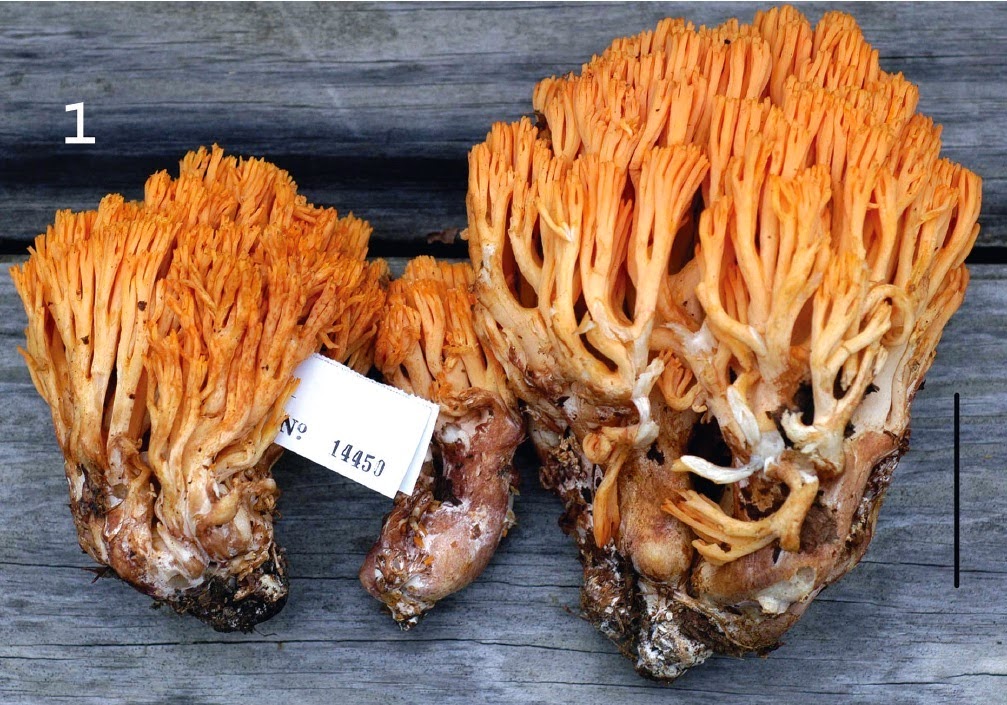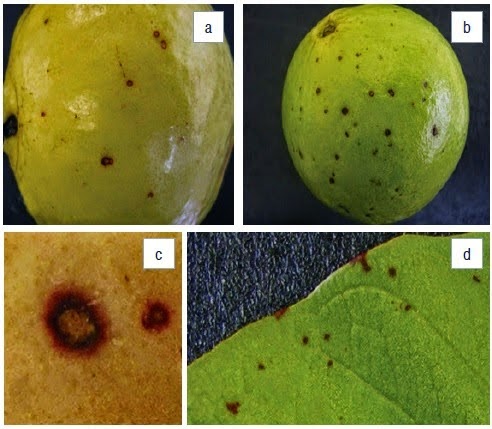Pucciniomycote Fungi (Rusts etc.) typically produce microscopic
fruiting bodies, though a few do produce larger sporocarps, typically with a
basal spore producing area, with spores being expelled through some sort of
structure above this. However the production of such bodies seems to be
scattered throughout the group (rather than found within taxonomically defined
subgroups) and they seem to vary greatly in structure.
In a paper published in the journal MycoKeys on 3 November 2014, Merje Toome
and Catherine Aime of the Department of Botany and Plant Pathology at PurdueUniversity describe a new species of sporocarp-producing Pucciniomycote Fungus
from the Bilsa Biological Station in the Manabi Division of Ecuador.
The new species is described from a single colony found growing on a
Palm leaf in litter in a tropical forest. Colonies of the Fungus are orange in
colour, with a cushioned base and a long neck at the tip of which spores
accumulate in a mucus droplet. The spores appeared to be formed asexually, and
it is not clear if the Fungus has a separate sexual stage.
Field photo of fresh sporocarps on palm leaf. Note the
variable size and colour of the sporocarps. Scale bar is 2 mm. Toome & Aime
(2014).
A genetic analysis of the new Fungus showed it to belong within the Heterogastridiaceae,
a group of Pucciniomycote Fungi which to date only contains a single species,
which has never been shown to produce any similar fruiting bodies. The species
is named Pycnopulvinus aurantiacus,
where ‘Pycnopulvinus’ means ‘dense
cushion’ and ‘aurantiacus’ means
‘orange’. Toome and Aime also note that a specimen previously recorded from
Costa Rica as Pycnobasidium sp. but
never formally described appears to be genetically very similar to Pycnopulvinus aurantiacus, and therefore
probably represents a second species of Pycnopulvinus and
a third species within the Heterogastridiaceae.
Sporocarps of various stages and sizes after drying.
Scale bars are 0.5 mm. Toome & Aime (2014).
See also…
Lichens are symbiotic organisms, each consisting of a Fungus and an
Alga, the Fungus obtaining nutrients from the substrate (surface upon which the
Lichen sits), while the Alga produces carbohydrates through photosynthesis.
They the Fungi and Algae involved...
Coral Fungi of the genus Ramaria have been extensively studied in the temperate rainforests of the American Pacific Northwest, and to a lesser extent in the forests of America’s Eastern Seaboard, but are...
Coral Fungi of the genus Ramaria have been extensively studied in the temperate rainforests of the American Pacific Northwest, and to a lesser extent in the forests of America’s Eastern Seaboard, but are...
Guavas, Psidium guajava,
are fruit bearing trees in the Myrtle Family, Myrtaceae, closely related to Eucalyptus. They are native to Mexico,
Central America and the Caribbean Islands, but have been introduced to many
countries as a commercial fruit crop, the largest producers being Mexico, India
and Brazil. Like most...
Follow Sciency Thoughts on Facebook.





